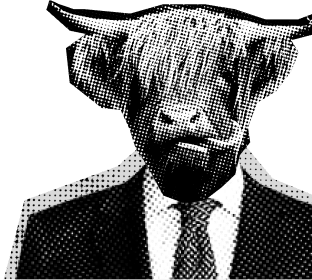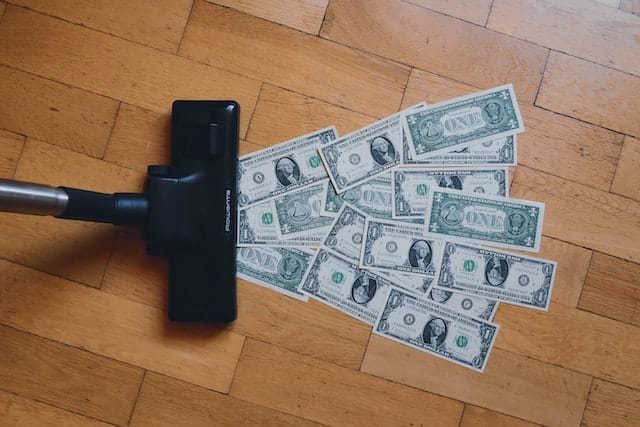Mixed signals have been popping up across financial sectors about whether inflation has peaked. They follow the release of September’s economic and consumer data.
Inflation Jumped Up in September
The Labor Department reported Thursday that the consumer price index (CPI) had risen 0.4% in September, its largest increase since June, thanks to surges in the cost of food, rent, and medical care. That led to a slight decrease in the annual inflation rate, to 8.2% in September, which was down from 9% in June, but still within historic highs.
In response The Boston Globe reported, “Hopes that inflation had peaked over the summer were dashed.”
Meanwhile, Bankrate’s Third-Quarter Economic Indicator poll has found that a plurality of economists (43%) believed inflation would be more significant than expected over the next 12 to 18 months.
Stock Market Suddenly Bullish
However, stock market traders responded in complete contrast. On Thursday stocks rose 827 points in a historic turnaround—specifically on investors betting that inflation had peaked.
The Dow finished up for the week, and on Monday it rose another 550 points while on Tuesday it jumped more than 300 points.
The S&P 500 and the NASDAQ also enjoyed significant gains; in fact, the NASDAQ on Monday had its best day since July. The four-day stock rebound followed near lows for the year.
Economist: Inflation More Likely to Go Down Than Up
One economist tells Political IQ that inflation is “more likely to be going down in the months ahead rather than up.”
“I really think the month over month number is the more relevant one” versus year over year, says Dean Baker, Co-Founder and Senior Economist at the Center for Economic & Policy Research (CEPR). “And I would say we’re probably already there. What we are seeing month over month in the core of the overall inflation rate, my expectation is that the worst is behind us.”
He says if you look back at the Spring, overall inflation was just over 1%. “I’d be surprised if we see anything like that. The core, we’ve been at 6/10 of a percent a month. I expect that to come down.”
Core inflation, as opposed to overall inflation, is everything other than energy and food, whose prices Baker says are so erratic the Fed can’t control them, and they aren’t factored in when deciding interest rates.
Gas Prices Take Quick Downward Swing
Ironically, energy and food are what consumers care about the most. “These are important in people’s lives, the family budget,” notes Baker,” but this isn’t the sort of inflation that the Fed can do anything about.”
However, the White House does have limited sway over gas prices. The Biden Administration has spent the past year releasing oil from the strategic petroleum reserve (SPR), opening up some federal lands for leasing, feuding with Big Oil over profits, and trying to both meet diplomatically with and then threaten the Saudis.
The result? Gas prices, which had earlier this year risen close to an average $5 per gallon, enjoyed a 99-day price drop before starting to tick back up a few weeks ago. In the past few days, though, prices started to tick back down again. According to Jared Bernstein, member of the White House Council of Economic Advisers, the drop has to do with “refineries coming online in the Midwest and California.”
Not wanting to lose that momentum with roughly three weeks to go before Election Day, Biden is planning to release yet another 15 million barrels of crude from the SPR on top of the 180 million barrels he released in the Spring that helped send prices tumbling the first time.
Shipping and Freight Costs Are Dropping
And something Baker says is a “huge deal”: shipping cost inflation and freight rates have decreased—despite high diesel costs.
“Looking ahead to Q1 2023,” said Yan Krasov, Research Analyst at William Blair Investment Management, “[trucking] rates could be down more than 20%, based on our estimates” with a total drop of 35% by the end of 2023.
The average price to ship a freight container from Asia to the U.S. West Coast has nosedived from $20,586 in January 2020 when Covid first struck to $2,720.
Baker says shipping prices returning close to pre-pandemic levels means costs will drop “for a whole range of products, food among them. And all the goods we import. Those are shipped here, and we saw those prices go through the roof. Now that it’s come back down, that’s got to be a big help.”
Consumers Keep Spending—But Frugally
On the other hand, preliminary data on October consumer sentiment, which measures whether consumers are expecting inflation, ticked up a bit. Consumers now see prices rising 5.1% in the next year, versus those surveyed in September who saw prices rising 4.7% over the next year.
However, that 4.7% was a one-year low, and Baker says rising “a hair higher” is “a very positive story.”
Meanwhile, consumers have not stopped spending. Retail sales were flat for September, with the Commerce Department on Friday also showing core retail sales were stronger than thought for the month of August.
“Consumer staying power may be waning, but it’s showing few signs of breaking,” said Tim Quinlan, a senior economist at Wells Fargo.
However, consumers are not buying big ticket items like cars, electronics or appliances. Even Amazon said that amid its “Prime Day” discounts last week, shoppers largely scooped up household goods rather than televisions or laptops.
Further, the housing market is dropping after being on a 20-year high.
“If people are putting off those big purchases, that means less demand on the economy. And again, that’s what the Fed wants,” says Baker.
Will There Be a Hard or Soft Landing?
The Federal Reserve has been raising interest rates in order to slow spending, especially on those pricey items that are so often bought on credit. Many economists expect a fifth 0.75 point hike at the Federal Open Market Committee (FOMC) meeting in December.
Some economists think that, given the lag time whenever the Fed acts, it’s been too aggressive already, and we’re in for a hard rather than a soft landing, that latter of which occurs when the Fed tightens monetary policy enough to reduce inflation, but without causing a recession.
“Soft landing’ will likely remain a mythical outcome that never actually comes to pass,” said Daniil Manaenkov, an economist at the University of Michigan.
White House economist Bernstein counters that safeguards like the strong jobs market will prevent a hard landing. “We have an unemployment rate that’s 3.5%. There is no recession that would prevail with that kind of unemployment rate,” he said on Sunday.
However, the labor participation rate is sagging, with the number of those Americans who want to work actually employed having dropped to just 62.3% in September.
Higher interest rates also mean the value of the dollar rises against other currencies. “That’ll mean a larger trade deficit,” notes Baker. “We’ll be buying more goods from abroad because they’re cheaper, and we’ll be selling less of our own stuff. That might be six months, eight months, ten months down the road.”
As for whether the U.S. could get dragged down by another major power, should it fall into recession, Baker says that’s not likely, despite how interconnected global economies have become.
“We’re much less dependent on the rest of the world than most other countries,” he says, noting the nations of the EU in particular. “If for whatever reason one or another good that we get a lot of from Europe got cut off or cut back, we could probably replace it with domestic production or imports from other places.”
But given that he believes we’ve already hit peak inflation, Baker says he’d prefer in December if the Fed would raise rates “something like 1/4 point rather than 3/4 because that really does run the risk that we’ll have a recession. And that’s not a pretty story.”
Read more exclusive news from Political IQ.


